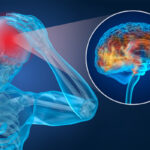Quality of life is important, isn’t it? Thanks to advances in medicine and adjacent fields, average life expectancy has increased dramatically. While we may be living longer than ever, the ultimate goal should be to live better.
That’s easier said than done, especially when you consider that 10.7% of the global population suffers from some kind of mental illness. That’s where successful treatments like biofeedback and neurofeedback come in by providing immense optimism for the future.
Effective as they are, it’s important to note the differences as we lay out below.
What is Biofeedback?
Biofeedback is a psycho-physiological treatment technique that uses sensitive instruments to measure and report your body’s response to external stimuli. The aim of biofeedback treatments is to alter these responses.
By adjusting physiological responses, an individual can improve physical performance and overall health. Conditions such as hypertension, chronic back pain, anxiety, and stress can be managed using biofeedback treatments. The ultimate result is improved quality of life.
What is Neurofeedback?
Neurofeedback, as the name suggests, deals more with neurological issues. Our brains contain electrical impulses called brainwaves. These function within a normal range. The aim of neurofeedback treatments is to track an individual’s brainwaves to see if they differ from the norm.
People suffering from neurological conditions will have markedly different brainwaves. These differences can then be addressed through neurofeedback. Psychopathologies or mental illnesses like epilepsy, insomnia, hypersomnia, ADHD, and stress can be addressed through neurofeedback treatments.
What are the Differences?
1) Sphere of Influence
Biofeedback is a broad term and pertains to the measurement of the body’s function. Neurofeedback, on the other hand, measures brain activity. As such, neurofeedback is considered a specific subset of biofeedback.
2) Instruments
To measure the body’s physiological responses, the individual is connected to a biofeedback machine. Sensors connected all over the body monitor breathing, sweating, heart rate, muscle contractions, and temperature. The instruments for biofeedback only measure physical information.
Neurofeedback involves the use of quantitative electroencephalogram (qEEG) to monitor brain activity in response to audio-visual stimuli. From these observations, practitioners are able to generate a brain map.
3) Goal
Biofeedback is not concerned with training the brain. The aim of biofeedback is to focus on purely physical cues and alter them. A lot of biofeedback revolves around observation.
Neurofeedback focuses more on identifying abnormal brain functions and correcting them. This is achieved through segmenting the areas of the brain displaying “deviant behavior.” Once identified, each deviant trait is slowly eased towards the norm through specific exercises.
Understanding these differences is the first step toward pursuing the right treatment option for you to take care of your mental health.
Treatment at Chicago Mind Solutions
Our team at Chicago Mind Solutions has years of expertise with neurofeedback treatments, utilizing the advanced technologies of Low Energy Neurofeedback System (LENS) and BrainAvatar by BrainMaster. Learn more about neurofeedback and our other treatment services by contacting us at Please contact us at (224) 723-5050 or email info@chicagomindsolutions.com.






